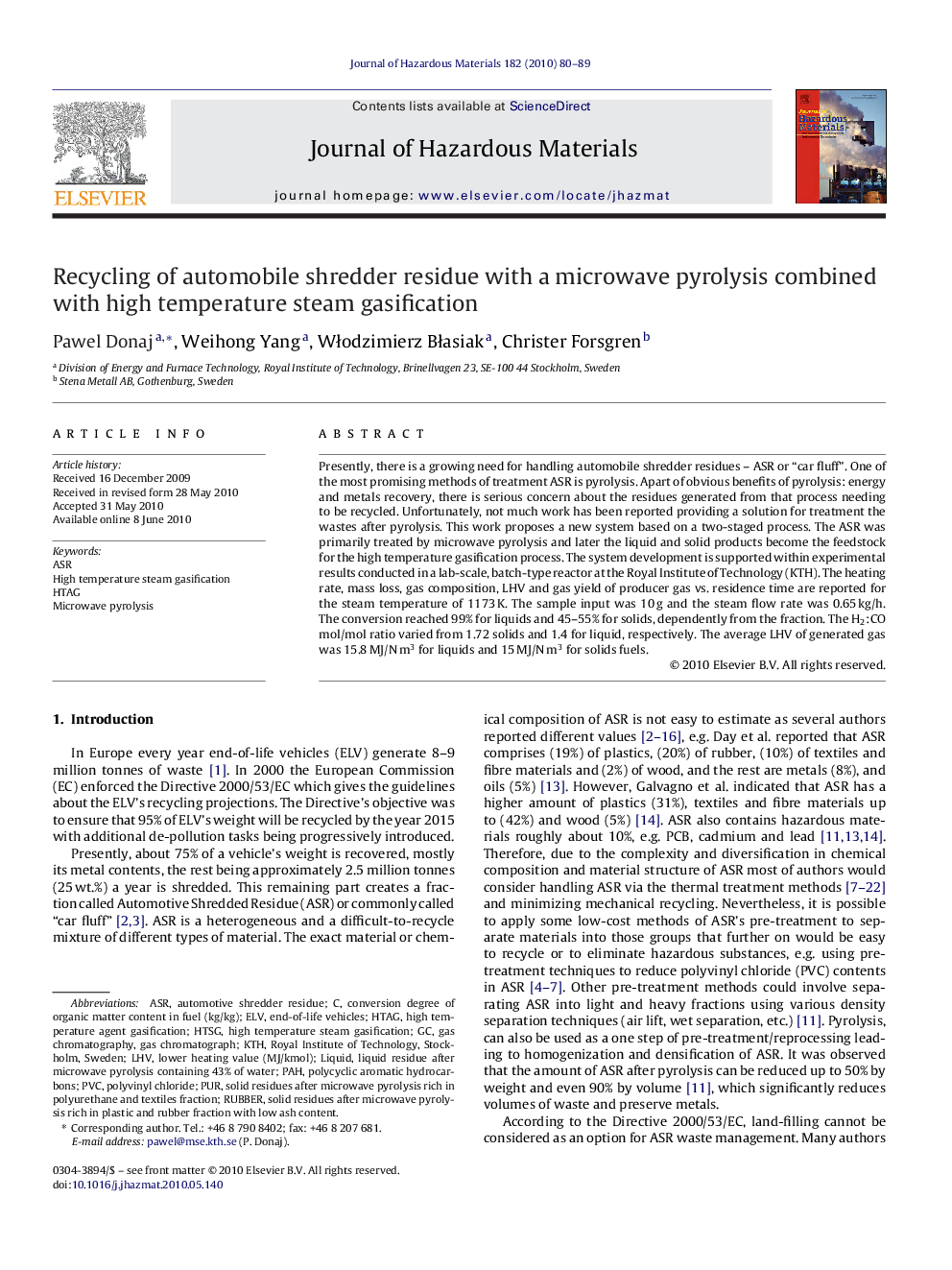| کد مقاله | کد نشریه | سال انتشار | مقاله انگلیسی | نسخه تمام متن |
|---|---|---|---|---|
| 579663 | 1453146 | 2010 | 10 صفحه PDF | دانلود رایگان |
عنوان انگلیسی مقاله ISI
Recycling of automobile shredder residue with a microwave pyrolysis combined with high temperature steam gasification
دانلود مقاله + سفارش ترجمه
دانلود مقاله ISI انگلیسی
رایگان برای ایرانیان
کلمات کلیدی
ASRPAHLHVKTHELV - اصلAutomotive Shredder Residue - جایگزین شردر ماشینpur - در حینRubber - لاستیکliquid - مایع Polycyclic aromatic hydrocarbons - هیدروکربن آروماتیک چندحلقهایEnd-of-life vehicles - وسایل نقلیه بی پایانHigh temperature steam gasification - پارگی گاز با دمای بالاPVC - پلیوینیل کلراید یا پیویسیMicrowave pyrolysis - پیرولیز مایکروویوPolyvinyl chloride - کلرید پلی وینیل
موضوعات مرتبط
مهندسی و علوم پایه
مهندسی شیمی
بهداشت و امنیت شیمی
پیش نمایش صفحه اول مقاله

چکیده انگلیسی
Presently, there is a growing need for handling automobile shredder residues - ASR or “car fluff”. One of the most promising methods of treatment ASR is pyrolysis. Apart of obvious benefits of pyrolysis: energy and metals recovery, there is serious concern about the residues generated from that process needing to be recycled. Unfortunately, not much work has been reported providing a solution for treatment the wastes after pyrolysis. This work proposes a new system based on a two-staged process. The ASR was primarily treated by microwave pyrolysis and later the liquid and solid products become the feedstock for the high temperature gasification process. The system development is supported within experimental results conducted in a lab-scale, batch-type reactor at the Royal Institute of Technology (KTH). The heating rate, mass loss, gas composition, LHV and gas yield of producer gas vs. residence time are reported for the steam temperature of 1173Â K. The sample input was 10Â g and the steam flow rate was 0.65Â kg/h. The conversion reached 99% for liquids and 45-55% for solids, dependently from the fraction. The H2:CO mol/mol ratio varied from 1.72 solids and 1.4 for liquid, respectively. The average LHV of generated gas was 15.8Â MJ/NÂ m3 for liquids and 15Â MJ/NÂ m3 for solids fuels.
ناشر
Database: Elsevier - ScienceDirect (ساینس دایرکت)
Journal: Journal of Hazardous Materials - Volume 182, Issues 1â3, 15 October 2010, Pages 80-89
Journal: Journal of Hazardous Materials - Volume 182, Issues 1â3, 15 October 2010, Pages 80-89
نویسندگان
Pawel Donaj, Weihong Yang, WÅodzimierz BÅasiak, Christer Forsgren,